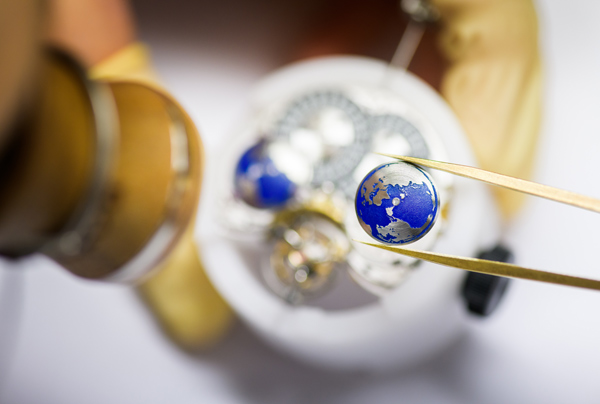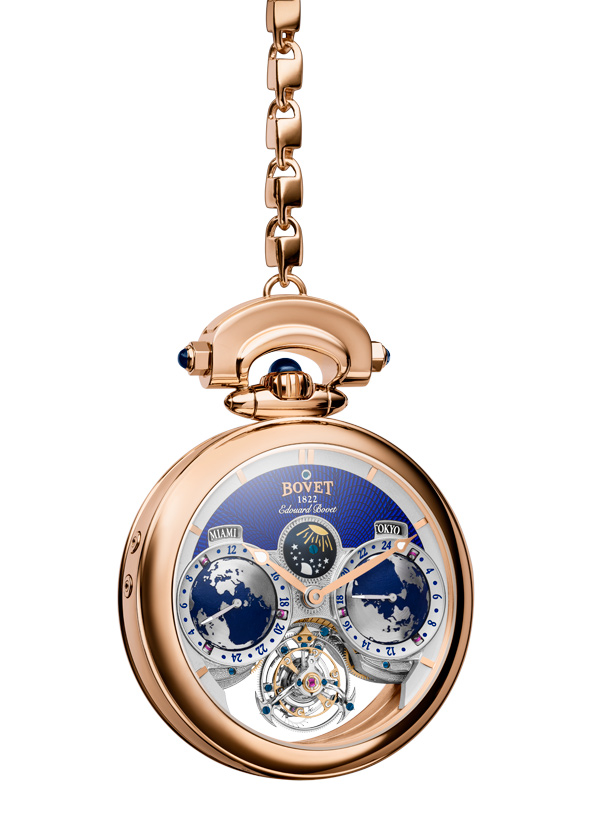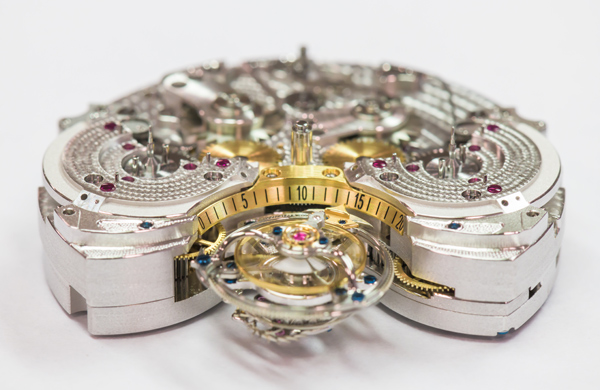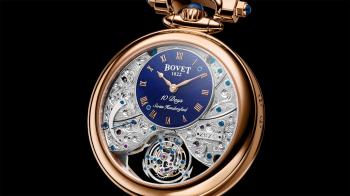April 20, 1818, the experienced watchmaker Edouard Bovet board the Orwell, a ship belonging to the East India Company, to conquest China carrying four timepieces. As the Swiss journal of watchmaking reported, a Chinese collector bought the four pieces for 10,000 Swiss francs each, which is the equivalent of 1,000,000 Swiss francs today. The enthusiasm for the Bovet brothers’ watchmaking quickly reached the Emperor, and then his court, and before long their work had captivated the nation. The impact was such that Bovet (pronounced Bo-Wei) became synonymous with high-end watches in the everyday Chinese language.
To mark the bicentenary of this key event, Pascal Raffy and the craftsmen have revisited and fully redesigned the flying tourbillon, in a new and prestigious rendering of this classic feature.
Three time zones
The Edouard Bovet Tourbillon is powered by a single barrel that ensures its impressive autonomy of over ten days, despite its many complications and 472 components. Using this same power, three different time zones can be displayed based on an entirely original configuration that offers complete and intuitive readability, with the local time zone occupying the center of the timepiece. In addition to the hour and minute hands, a dome indicates the day-night cycle. This dome turns anti-clockwise to represent reality as closely as possible, with the sun rising in the east and setting in the west.
Each of the two additional times displayed correspond to any one of the earth’s twenty-four-time zones, set according to the user’s preference. Each window displays the name of the chosen city and the time in this same zone via a hand that moves over a 24-hour dial. This hand follows the contour of a hemispherical dome representing the Earth and naturally passes over the meridian of the chosen time zone. To minimize power consumption and optimize the timepiece’s chronometry, the two domes are made of titanium. This choice of material makes the craftsmanship of these domes more complicated, both technically and artisanally. The dome’s surface is engraved to represent a world map, which has been specially redesigned to take up the hemispherical surface of the dome. The surface of the oceans is lowered in order to receive the blue Super-LumiNova, which is delicately applied by hand.

The Edouard Bovet Tourbillon is housed in the emblematic Amadeo convertible case. Patented in 2010, the Amadeo system transforms a timepiece into a reversible wristwatch, a table clock, or a pocket watch without the use of any tools. This feature requires the time to be displayed on both sides of the movement and in the case of the Edouard Bovet Tourbillon, the second face presents hand-engraving that adorns each detail of its surface. It features a blue-lacquered guilloché dial, displaying the hours and minutes, synchronized with the display of local time.

The movement continuously and simultaneously drives no less than eight hands and three hemispherical displays. The pivots have been burnished and the teeth of each moving part have been cut by hobbing with the greatest respect for artisanal tradition, as conceived and practiced by the Bovet brothers at the dawn of the nineteenth century.
Double-sided flying tourbillon
The tourbillon therefore enjoys optimized power that is practically continuous over the certified ten days of power reserve. To further increase the timepiece’s chronometric qualities, the patented double-sided flying tourbillon was chosen. This new vision of the tourbillon considerably improves its chronometry by minimizing friction and lever-arm effects and enhances its aesthetic appeal. As such, the entire carriage of the tourbillon appears to float freely in the air, its attachment to the movement made almost invisible by its small size.

The Edouard Bovet Tourbillon is crafted according to precise calculations to work in perfectly isochronous tandem with the variable-inertia balance wheel. The regulating mechanism thus formed oscillates at 18,000 vibrations per hour, the frequency dear to the Bovet brothers and to purist watch collectors. In response to the hemispherical time displays, the carriage bridge brings balance to the timepiece with its three-dimensional double vault. Here too, titanium was chosen to make the carriage as light as possible.
The limited 60 pieces edition restricts the number of movements that will be manufactured, independently. It’s available in red gold, white gold, or platinum.






